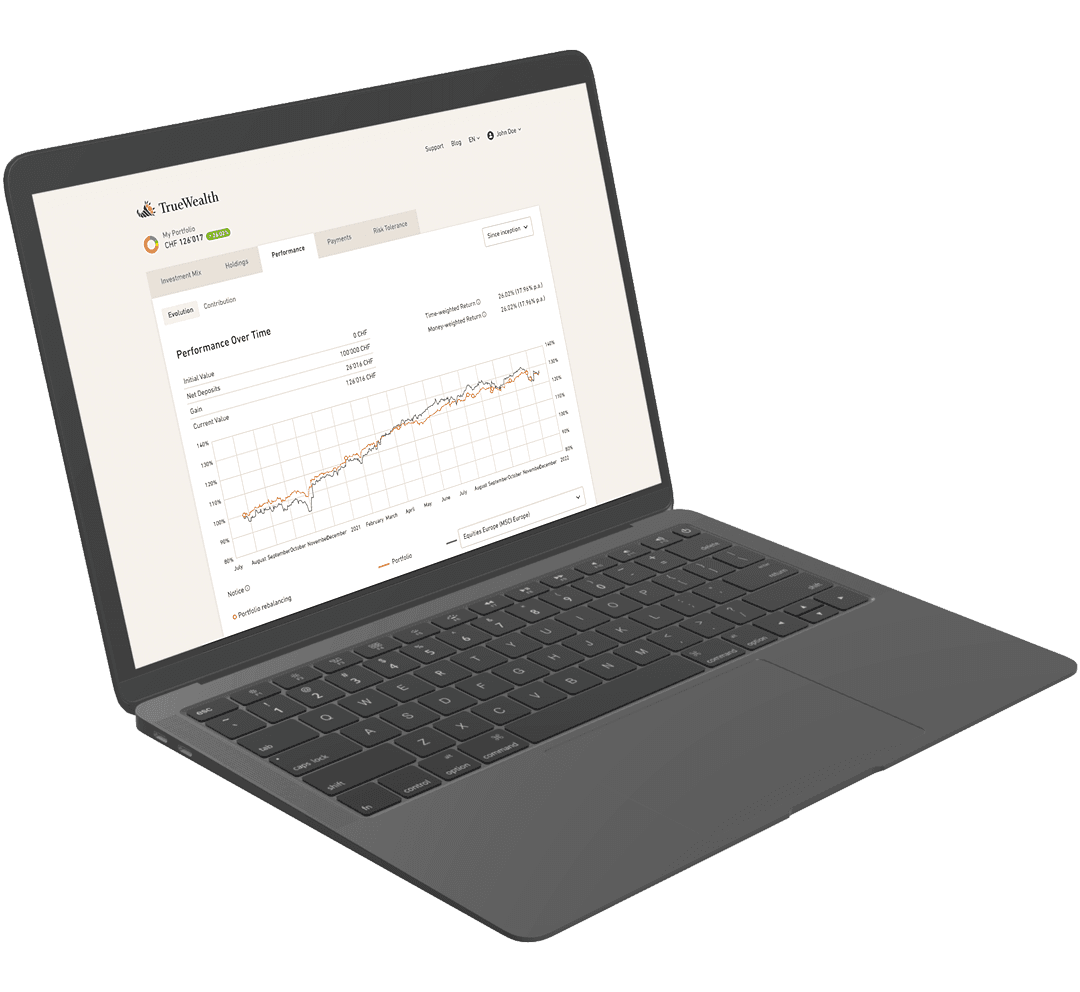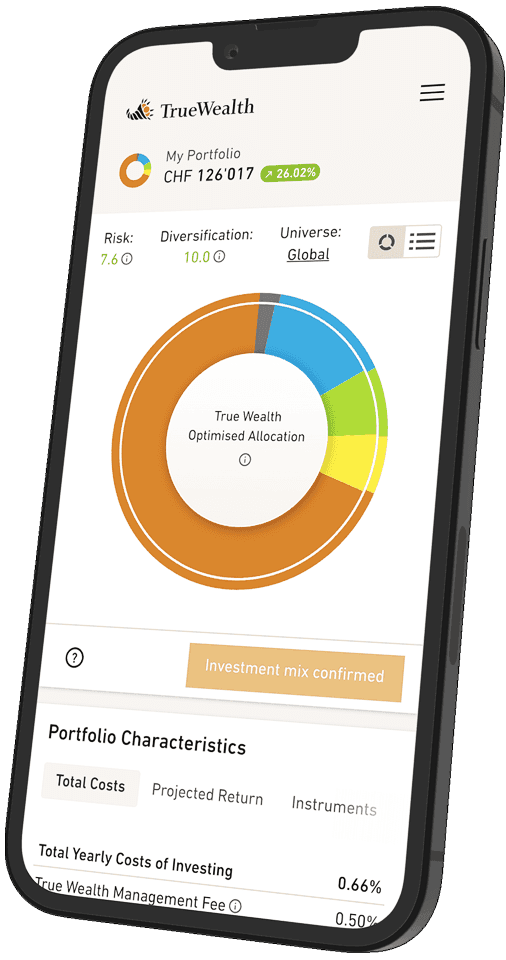
Product Recap 2020
As 2020 nears an end we thought it would be interesting to share an overview of what True Wealth has been up to throughout this year, enriched with some additional information. This recap goes through most of the public-facing things which the engineering team worked on throughout 2020.
Fully Online Account Opening
The account opening process is probably not something that many customers think about - it’s just something that you have to do in order to open a True Wealth account. Once it’s done, you don’t really have a reason to think about it again.
Some of our customers may still remember the pain that they had to go through to open a True Wealth account. We’ve worked continually on decreasing this pain. In 2015 our customers had to go to the post office to have their identity verified - this was obsoleted when we went live with the “selfie”-based digital identity verification process in 2016. There was however the long-standing issue of having to send and receive documents by mail, and providing a wet signature.
At the end of last year and for a significant chunk of this year we worked on fully automating our account opening process. The goal was to allow our customers to open a new True Wealth account and deposit money into it in one go. Without breaks. While this sounds relatively simple, it involved quite a few individual components all coming together smoothly:
- Real-time contract generation
- Online document signing
- Online customer identification
- Real-time bank account opening
In 2019 we worked together with our custodian banks to be able to do real-time contract generation and account opening. We also invested considerable engineering effort into putting together a novel solution for gathering all of the necessary information for the identification.
In January 2020 we went live with the first step: For our customers some parts of the opening process seemed to be automatic. As a new customer you could take a picture of your ID, and a video of yourself watching a dot move across the screen. A few hours later we would inform you that your documents were ready to sign digitally. Afterwards, you would receive the IBAN for your new account and deposit your money. In the background, all of the validation and verification of documents and liveness was manual, which was why our customers had to wait a few hours to sign the contract documents.
In March we introduced artificial intelligence integration to validate the ID document, and to verify that the picture on the ID document matches the selfie video that we took of the customer. In May, once we were confident in how this process works, we started to enable some customers to go directly to the contract signing. We call this “single-step” opening, because under certain conditions, as a new customer you can now open your account in one step.
Throughout the year we have been increasing the number of cases that we can handle in single-step. Starting with about 30% of signups in June, we were able to handle about 40% of signups in the single-step mode in December. We hope to continue to increase the number of new account openings which can be handled in single-step mode throughout 2021.
Results
While it sounds like we did a fair amount of work, you may be wondering what difference this work made. We have prepared some data which we believe illustrates the effectiveness of this work.
The measurable thing that impacts our customers is how long it takes from beginning the account opening to money arriving on their True Wealth account (we call this time to portfolio funding or TTF). This number is dependent on a lot of external factors (how quickly the customer progresses through the account opening, how long they wait to do the bank deposit, how long the bank deposit takes, etc.).
Best-case time to funding
n the following graph, we want to show the difference in best-case TTF between 2019 and 2020. We use the first percentile as a proxy for best-case. The first percentile TTF is the number for which only 1% of account openings were faster (or conversely, which 99% of openings were slower than).
The first percentile TTF was hovering between 4.5 and 6 days throughout in 2019. In 2020, this has been consistently been under 1 day. There have been some cases of customers beginning the opening and having a funded and invested portfolio on the same day.
Average-case time to funding
In the next graph, we want to show the difference in average-case TTF between 2019 and 2020. We use the median (50th percentile) as a measure for the average-case. The median was between 14 and 20 days in 2019. Towards the end of 2020 the median TTF is between to 3 and 7 days.
Finally, you may wonder how many portfolio openings we dealt with in 2020, and how this relates to the numbers in 2019. March 2020 and November 2019 were the busiest months of the respective years. In March in 2020, we had 403 successful openings, in November 2019 we had 171.
Streamlining of Operations
True Wealth’s goal is to automate and streamline as much as we can in order to offer our customers a cost-efficient product. Since going live in 2014 we have been able to automate many of our back-office processes, but unfortunately not all of them. This year we put additional focus on eliminating processes which require manual intervention, or the printing, scanning, and mailing of paper forms.
Automation of Withdrawals and FX
We worked together with our custodian banks to simplify and fully-automate the withdrawal and FX processes.
For withdrawals we previously had different processes for each custodian, and the processes had manual steps involved. For instance, it was previously necessary to sign an authorisation form for each withdrawal. This form would be forwarded to the custodian and manually processed, which delayed the process. With both custodians we now have a process where the withdrawal account needs only be confirmed once, and once confirmed all withdrawals are processed automatically and without manual intervention.
Whenever we trade in foreign-currency instruments, we need to do some foreign currency exchange (called FX in the industry). Our FX process with the custodian banks previously had manual steps involved, which was also a source of human error. Once again, we worked together with our custodian banks to implement a fully-automatic FX process. This has brought more consistency and reliability into the trading, withdrawal, and account closing processes.
Efficient KYC / AML Processes
An important part of being a wealth manager is compliance with regulatory requirements. These are called “Know Your Customer” (KYC) or “Anti-Money Laundering” (AML) regulations. These require that we perform certain checks during the opening of a new customer account, and during the lifetime of an existing customer. As our customer base has grown and the number of new customers we have every month has grown, we started to reach the boundaries of the processes that we had in place. This year we spent a fair amount of effort in automating and improving the efficiency and reliability of, and reducing the manual work involved with, these processes. We have not empirically quantified the impact of these changes, but the people who work with the processes on a daily basis are pleased with the changes that we have made.
Referral Program
True Wealth’s referral program is an important source of customer growth. We decided that we could do a better job of promoting the referral program, and give our customers better mechanisms to spread the word about True Wealth to their friends. We placed a more prominent link to the referral program and redesigned the look and feel of the referral program, to make the advantages and benefits of the referral program more clear to our customers. We also added the ability for a customer to directly send an invite to a friend, and follow up on the invites that they sent. We have been rolling out the new features since early December, and have a few more changes in the pipeline, but we are already happy with the results that we have seen.
Degressive Pricing
In June this year we lowered our fees for investment amounts exceeding 500’000 Swiss Francs, see our fees. From a technical perspective, this required a couple of adjustments in our code base.
Some of our clients complained that this price reduction would only profit the wealthy. We took that feedback seriously, we are working on new features and products that will benefit all our clients.
Mobile App
A common request from customers is whether True Wealth has an app. Until October this year, we had to say: “No, but our app is responsive, so it works just as well on mobile!”. Not so satisfactory. We decided to prioritise work on getting a mobile app into the store in the second half of this year. Thanks to Android’s support for Progressive Web Apps (PWAs), getting our app in the Play store was not too hard. On iOS we had to do a little legwork to get the app in the store.
We are aware of some rough edges in the mobile app, particularly during the account opening process. Additionally, we are working very hard on biometric authentication (logging in with fingerprint or face recognition). We have already made good progress, and hope to offer this in early 2021.
Homepage Redesign
For the last two years or so, we have become increasingly aware of the need for our website to be overhauled - both in the look and feel, and from a technical point of view. This year we were determined to do something about it. With the hire of our new Design and UX specialist Florian and our Lead Frontend Engineer Damian, we were ideally positioned to make this desire a reality.
Florian worked hard navigating the waters of the design solution space to come up with a visual identity which resonated internally. In the meantime, Damian did research on the technical aspect of how we would create the new website and feed it with content. With the foundations laid, we got to work on putting together the new website.
We are all incredibly excited to present the new look and feel of our website. The content that you’re reading now is on the new website, take a look around and let us know what you think!
Various Topics
Next to the “big ticket” items above, we worked on a collection of smaller items. These span the spectrum from “visual-only” to “invisible”.
Intraday Prices for Rebalancing
The job of our portfolio rebalancing algorithm is to look at the current market prices, the contents and target allocation of a portfolio, and to propose which trades should be made for that portfolio. The rebalancing algorithm also has certain thresholds built in which prevent it from trading too frequently (for a long-term investor, trading too frequently usually results in lost returns). These thresholds (combined with the 2% cash buffer) make it such that, as long as the markets aren’t too volatile, we can rely on using end-of-day (EOD) prices from the previous day for the rebalancing.
Under normal conditions, EOD prices work perfectly fine, but when the markets get very volatile with big swings up and down then it starts to cause trouble. In the worst case, the suggested trades which the rebalancer calculates cannot be made, because not enough cash would be available. The coronavirus pandemic caused exactly such volatility in February and March.
In order to be able to get viable trades we could always manually fetch intra-day prices and set certain prices to the current market price. We decided to work on fixing this problem properly. We were able to tap into an additional data feed from our price provider, which got us near-realtime prices. With a few more tweaks, we were able to feed these prices into the rebalancer, and start trading based on actual market conditions automatically.
Reduction in cash percentage
A nice side-effect of near-realtime prices is that we have less need for a cash buffer for trading. As a result, we have been experimenting with allowing a reduced cash percentage. At the moment, it’s possible for a small group of customers to set the target cash percentage to 1%. In the month since we have taken this “beta” feature live, 167 portfolios have set the cash percentage below than the default of 2%. Over time we hope to be able to stabilise this feature and begin offering it as a default in our optimised portfolios, and for all customers.
Internal Business Intelligence Tooling
This year we took on the challenge of finding a way to surface and visualise business-relevant metrics based on our data. Until now, we either had to write (increasingly) complex SQL queries and Java code in our application to obtain data, or write one-off SQL queries to extract the results we were looking for. We were looking for something which would allow us to explore, analyse, and share data.
In the end, we decided to settle on a combination of the Metabase tool for querying and presentation, powered by a growing set of SQL views and materialized views in a dedicated business intelligence schema for quick access to business-relevant derived information. All of the charts in this blog post were derived from charts in our business intelligence tooling.
Usability Enhancements
We worked on a number of small usability enhancements which make our product simpler and more intuitive:
QR-Bill
We implemented functionality which allows you to make a deposit into your True Wealth portfolio by scanning the new QR-Bill. See our post on QR-Code.
Bank Name Auto-Completion
When you paste the IBAN of a bank account, we autocomplete the Bank Name field for you if the name can be found in our database.
Clearer Content Presentation
We reworked the way that we present content on a few pages of our application, and introduced pagination for long tables.
About the author

James is CTO at True Wealth.

Ready to invest?
Open accountNot sure how to start? Open a test account and upgrade to a full account later.
Open test account